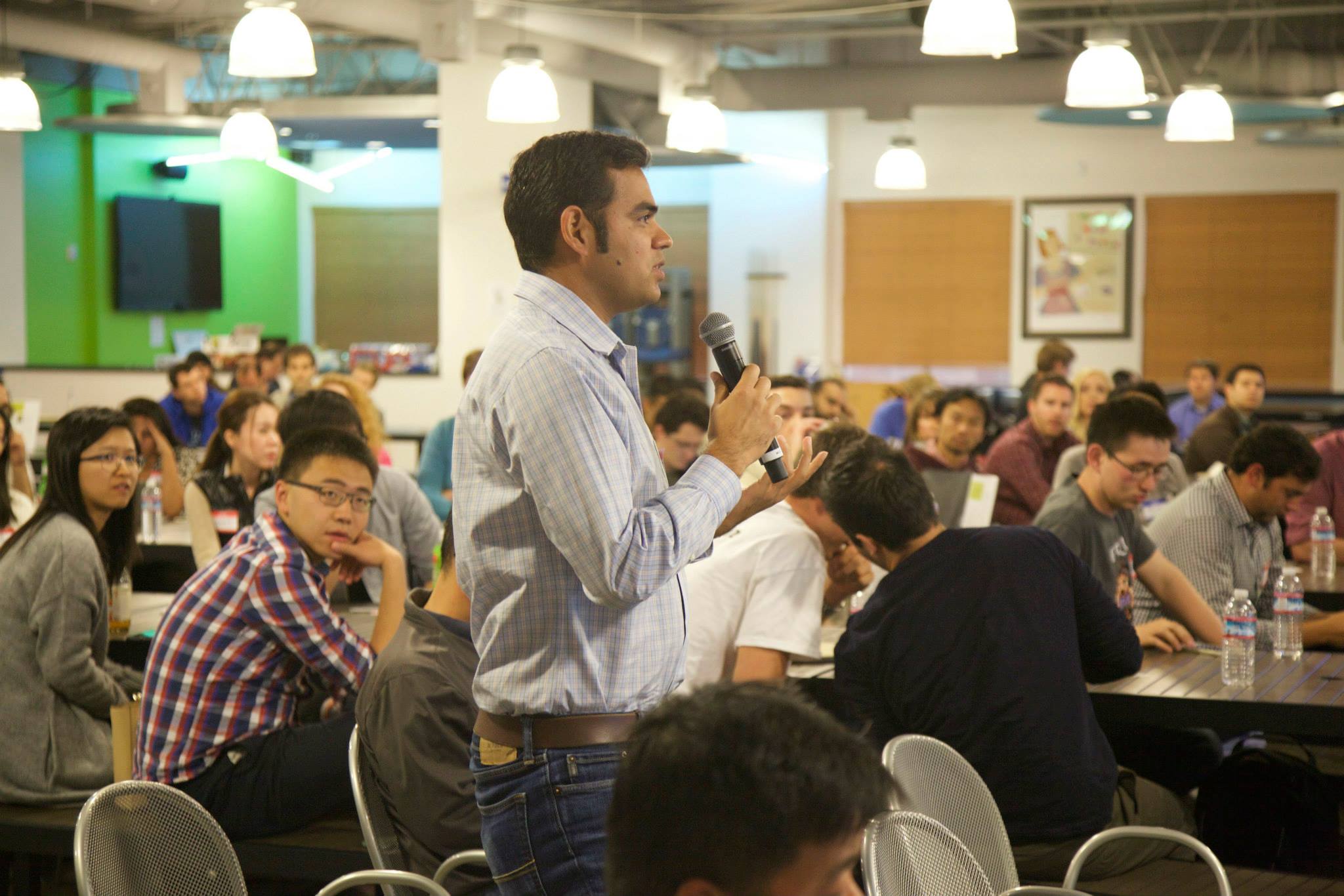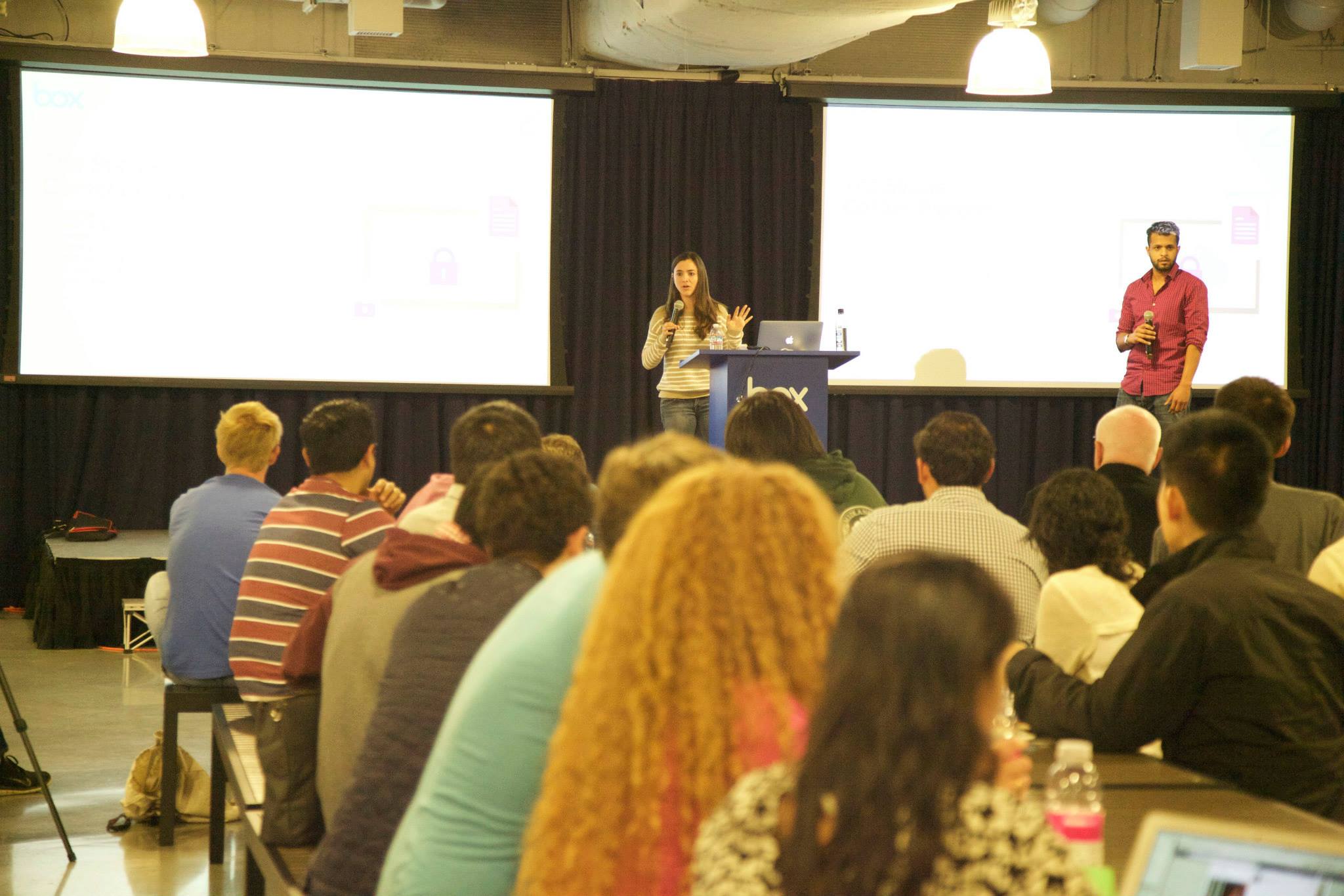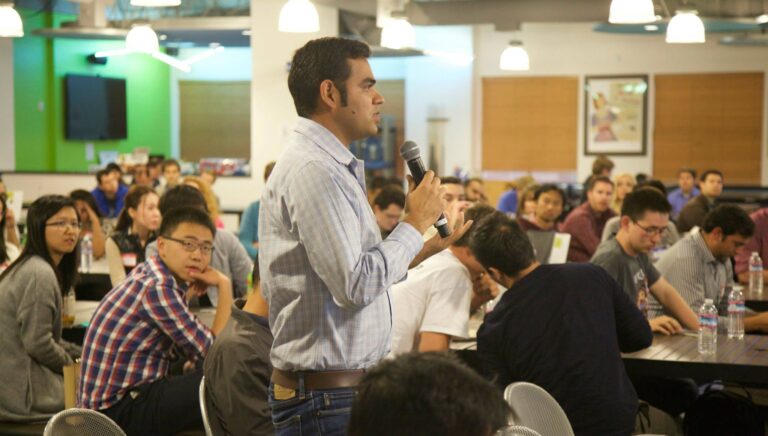Here at Branch, we were super excited to be working on another Mobile Growth Hackers meetup, graciously hosted by Box at their beautiful headquarters in Los Altos. Good pizza, great networking, and an insightful presentation with Box’s Group Product Manager of Mobile, Vanessa Larco, and Manager of Product Analytics, Abhishek Gupta, were promised on the meetup event page, with RSVP’d attendees eager to hear and learn from experiences in mobile product strategy and data-based growth.
Last Thursday these promises were delivered, along with a great energy in Box’s spacious first-floor meetup space. Mobile growth hacking enthusiasts showed up despite the rainy Palo Alto weather, enjoying pizza and beer while swapping stories and making new connections.

When it came time for Vanessa and Abhishek to introduce themselves, their great working relationship came through, as they emphasized teamwork, and what they were able to accomplish together, over individual titles and accomplishments. They then launched into an important and recurring theme throughout the growth-focused evening: a focus on their users.
Box and the Enterprise User
“More endpoints lead to higher overall engagement”
Vanessa and Abhishek first introduced Box’s product timeline, where the original web app was followed by Box for desktop, then Box for mobile, and finally by a developer platform. They discussed how important it was for them to analyze how their customers were interacting with their multi-platform product at every step of their product development schedule. They described these learnings as invaluable, finding that their customers used Box in any and all combinations, some using just one platform and some using all.
Early on, they found greater general engagement among users who engaged with Box over web and desktop. This analysis informed their decision to build Box’s mobile platform, giving users another venue to interact on. As more platforms were built, they continued to find that the more platforms a user engaged on, the more engaged they were in general.
Stating user engagement as one of the variables defining what they called a successful product, Vanessa and Abhishek presented the following “Formula for Success”:
Adoption + Engagement + Revenue = Success
Focus on Adoption
“Adoption starts with knowing where your users are coming from”
Continuing in the Formula for Success, the next topic of discussion was adoption, and the importance of knowing where it is taking place. In their analysis, Box found that 50% of their users were coming from Emails, Mobile Web, and Cross-promotion tactics. However, the other 50% remained unknown which, as Vanessa stated, is a “huge problem if you are a mobile app developer.”
With this in mind, Vanessa and Abhishek continued by noting the difference between things you can and cannot control and, for testing sake, leveraging those areas with control and high traffic. In Box’s case, one of these leverage points is email, where there is not only a high volume of people seeing their content, but there is also information about what people are opening and clicking. Iteration after iteration saw an 11% increase in their conversion performance before they were met by a performance plateau, to which Vanessa acknowledged, “It’s also important to know when to stop testing.”
Moving from their experience with email, they decided to take the challenge of app adoption to their mobile web platform, using a banner ad to let users know that an app experience was available. “We were trying to have our cake and eat it, too,” Vanessa described their unobtrusive banner. Designed to be the least offensive, it also turned out to be the least-converting.
Vanessa and Abhishek went on to explain that this is where A/B testing came in to play. It’s about balancing and optimizing the “trying to drive users to an app experience” with the risk of “deterring them from even continuing with the mobile experience.” They found that when they took a larger risk with banner placement, and how often mobile users saw the banner, the improvement in conversion (in this case, app downloads) was worth the risk in user dropoffs.

Engagement Above All
“Fix engagement first before you focus on adoption”
In the excitement of optimizing for adoption, however, Vanessa and Abhishek stressed the importance of engaging existing users over finding new users. They pointed out that if you’re not actively keeping your users, you might see growth in your user base month-over-month, but this will only last as long as you keep investing in growth. Once that investment stops, your retention becomes everything in terms of numbers.
Optimizing for retention at Box meant analyzing engagement: identifying customers and structuring them into demographics, then analyzing how those groups were using their product. One of the studied slices of users included their most engaged users. Vanessa and Abhishek were able to look at their engagement, specifically, to see what experiences they had that contributed to that great engagement. They suggested focusing on the first 45 days a user will spend with the product to find out where they see value in it.
Putting users into demographics not only made for better retention, but also contributed to identifying new marketing and adoption strategies. When they understood what aspects of Box specific demographics of customers were interested in (based on current engagement), they could highlight those aspects of Box to potential new customer. Abhishek added, “Data can inform you on the value your product brings to each demographic, which is gold when optimizing user acquisition channels.”
Data or Not?
“Data is great for optimization, but it’s not great for innovation”
Before they concluded, Vanessa qualified the power of data they had demonstrated, stating that data is no replacement for talking to your customers. “It’s easy to assume your customers are using your product the way you intended,” she warned, and continued to explain that while you could think you are fulfilling all your customers needs, data won’t tell you if they are hacking it for other purposes or filling in other gaps themselves.
Takeaways
All in all, our mobile growth hackers left the night’s meetup with new insights into mobile growth and its relationship to user acquisition, retainment, and finding new strategies for both. Another thanks to Box, and to Vanessa and Abhishek, for hosting and for sharing these insights with us.
Want to stay in the Mobile Growth Hacking loop? Join our meetup group!






















